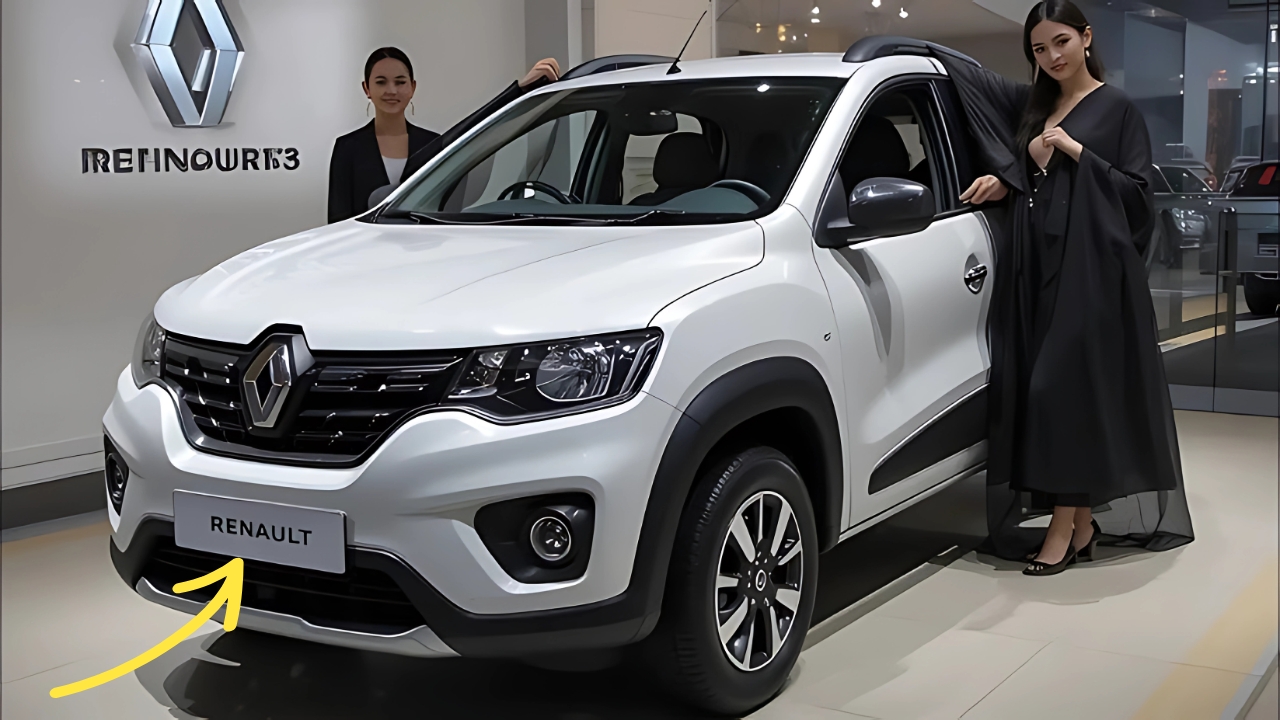Renault Kwid: The Indian automotive landscape has witnessed significant transformations over the past decade, with manufacturers constantly striving to deliver products that balance affordability with contemporary features.
Among these offerings, the Renault Kwid has emerged as a defining product that challenged conventional notions of what an entry-level car could offer.
Since its introduction in 2015, the Kwid has undergone several updates, with each iteration raising the bar in its segment.
Origins and Market Positioning
When Renault conceptualized the Kwid, the French automaker faced the challenging task of creating a vehicle that could compete in India’s price-sensitive small car segment while offering something distinctly different from established players.
The company’s approach was revolutionary—develop a car with SUV-inspired styling elements, a spacious cabin, and modern features at a price point that would appeal to first-time car buyers.
The Kwid was built on Renault-Nissan’s CMF-A platform, specifically developed for emerging markets. This modular architecture allowed Renault to optimize costs while maintaining structural integrity and meeting safety requirements.
The platform’s versatility has since enabled Renault to spawn multiple body styles and variants, establishing a mini-portfolio within the entry-level segment.
Design Philosophy: Breaking the Mold
One of the Kwid’s most striking aspects upon launch was its design language. While competitors in its price bracket featured conventional hatchback styling, Renault took the bold step of infusing SUV-inspired design elements.
The raised stance, pronounced wheel arches, and robust front fascia gave the Kwid a visual presence that belied its compact dimensions and affordable positioning.
Over subsequent updates, Renault has refined this design philosophy. The latest iteration features split headlamp setup with LED daytime running lights positioned above the main headlamp cluster—a design trait typically seen in more premium vehicles.
The redesigned grille with chrome embellishments and more sculpted bumpers enhance the vehicle’s road presence.
The side profile maintains the original’s raised stance but now features redesigned alloy wheels in higher variants that add a touch of sophistication. At the rear, C-shaped LED tail lamps and a revamped bumper complete the contemporary look.
This evolutionary design approach has ensured that the Kwid remains visually distinctive and appealing despite being in the market for several years.
Cabin Experience: Space and Technology
Perhaps the most revolutionary aspect of the Kwid was how it redefined interior expectations in the entry-level segment.
Traditionally, affordable cars compromised on cabin space and features, but the Kwid challenged this norm with its surprisingly spacious interior and segment-first technology offerings.
The dashboard layout prioritizes horizontal elements that enhance the perception of width. The centerpiece in modern variants is a touchscreen infotainment system—initially 7 inches and later upgraded to 8 inches—that supports smartphone connectivity through Apple CarPlay and Android Auto.
This feature, once exclusive to premium segments, has become a defining element of the Kwid’s value proposition.
The instrument cluster has evolved from a basic analog setup to a more sophisticated digital-analog combination.
Higher variants now feature a fully digital instrument cluster that displays vehicle information clearly and can be customized according to driver preferences.
Storage spaces abound throughout the cabin, with thoughtfully designed door pockets, a glove box with separate upper and lower compartments, and central storage spaces that can accommodate everyday items.
Rear seat space remains impressive for a vehicle of its exterior dimensions, with adequate legroom and headroom for adult passengers.
Performance and Efficiency
The Kwid started life with a 799cc three-cylinder petrol engine producing modest power outputs suitable for urban commuting.
The powertrain lineup was later expanded to include a more powerful 1.0-liter option that enhanced highway drivability without significantly compromising fuel efficiency.
Transmission options have also evolved, with the initial 5-speed manual gearbox being joined by an automated manual transmission (AMT) that Renault brands as “Easy-R.”
This option has proven particularly popular in congested urban environments where the convenience of a two-pedal setup outweighs the slightly higher cost.
Fuel efficiency remains a core strength of the Kwid, with both engine options delivering impressive kilometers per liter figures.
The lightweight construction, aerodynamic design elements, and efficient powertrain calibration contribute to this economy—a critical factor for the target demographic who often place running costs high on their priority list.
Safety Advancements
As safety awareness and regulations have evolved in the Indian market, so too has the Kwid’s safety package. The latest iterations feature dual front airbags, ABS with EBD, rear parking sensors, and seat belt reminders as standard equipment across the range.
Higher variants offer additional features such as a rear camera with guidelines and passenger side airbag.
The structural integrity has also been enhanced over the years, with high-strength steel being incorporated at critical points to improve crash protection.
These improvements reflect Renault’s commitment to evolving the product in line with changing consumer expectations and regulatory requirements.
Market Impact and Legacy
The Kwid’s influence extends beyond its sales figures. It has fundamentally altered consumer expectations in the entry-level segment, compelling competitors to offer more features, better design, and improved technology even in their most affordable models.
This “democratization” of features previously reserved for higher segments has benefited consumers across the board.
The model has also established Renault as a significant player in the Indian automotive landscape, providing the company with a strong foundation from which to launch other products.
The success formula—distinctive design, segment-first features, and value pricing—has informed Renault’s approach to other models in its portfolio.
Looking Ahead
As the automotive industry undergoes profound transformations with electrification, connectivity, and autonomous technologies, the Kwid is likely to evolve further.
Renault has already showcased electric versions of the Kwid in international markets, signaling potential future directions for the model.
The challenge for Renault will be to maintain the Kwid’s value proposition while incorporating these new technologies and meeting increasingly stringent safety and emission norms.
However, the platform’s inherent flexibility and Renault’s demonstrated willingness to innovate suggest that the Kwid will continue to evolve and potentially redefine entry-level mobility once again.
In conclusion, the Renault Kwid represents more than just an affordable car; it embodies a philosophy that entry-level doesn’t have to mean compromise.
Through thoughtful design, strategic feature inclusion, and continuous evolution, it has created a new paradigm in affordable mobility—one that prioritizes the overall ownership experience rather than merely focusing on acquisition cost.

